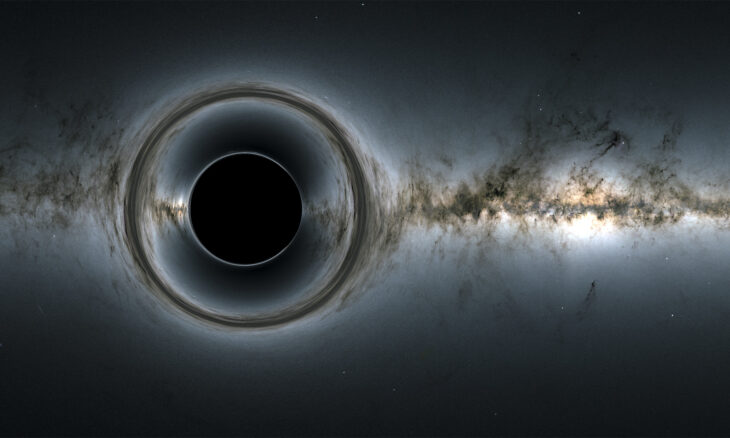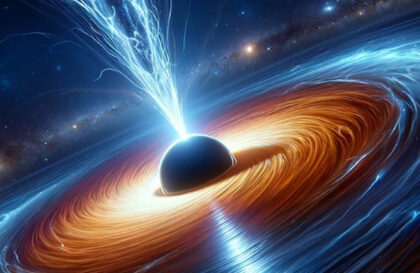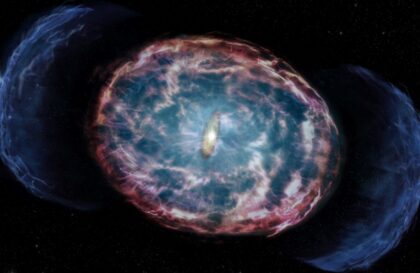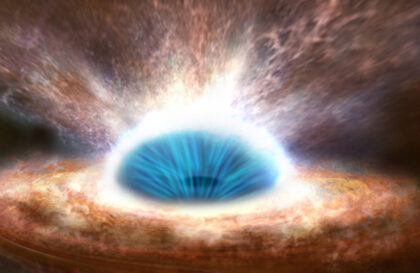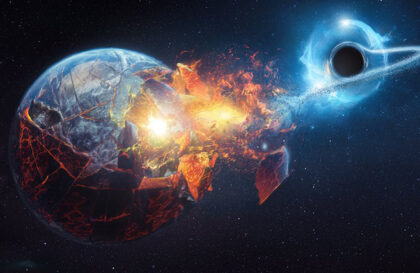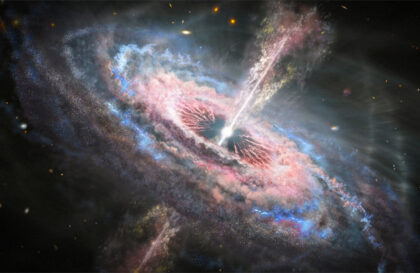Do black holes have the ability to eject anything? And can they emit light?
The answer is affirmative. Black holes, as they were theorized and as they’ve been observed, are not entirely black.
Even though black holes attract various objects towards them, their capability to emit luminous particles in the form of jets has long puzzled scientists.
Why does a black hole eject matter?
Why does it eject?
Matter, at the subatomic level, consists of charged particles. Under the influence of a black hole, these particles heat up, generate electric currents and magnetic fields, and radiate energy. Some of the matter, having lost momentum, falls into the black hole, passing its event horizon — a boundary beyond which neither matter nor light can escape. This increases the mass of the black hole.
Credit: NASA/JPL-Caltech (Caption)
However, as particles heat up due to friction, most are ejected due to increased pressure, forming an accretion disk. This leads to the formation of two radiation jets (also known as jet relativistic jet) in opposite directions. This radiation spans everything from radio waves to gamma rays. Processes in supermassive black holes, which we see beyond our galaxy, are similar but are more powerful and more prominent in scale.
Black Hole Shockwave
An international team of scientists from the USA, Italy, and China has hypothesized that shockwaves, formed when high-speed particles ejected by a black hole decelerate, might explain the expulsion of matter into space. This matter, observed as jets, originates not from the black hole itself but from its accretion disk. The jets likely form due to the acceleration of matter and its interaction with the magnetic field near the disk’s poles, moving at relativistic speeds.
New Black Hole Model
Black holes eject much more matter than they consume due to the accretion disk surrounding them. This disk, composed of rotating gas and dust, emits light and other electromagnetic radiation. Some matter from the disk falls into the black hole, while others are ejected because of radiation pressure. Every galaxy typically has a supermassive black hole at its center, but only active galaxies possess accretion disks. In active galactic nuclei, there are both fast ionized gas streams and slower-moving molecules. The traditional model suggests such.
Radio data from the National Science Foundation’s Very Large Array facility was used to construct this image of Cygnus A, the brightest radio source in the sky located outside our galaxy. Long, thin particle jets produced by a supermassive black hole in the galaxy’s center link to vast lobes where speeding electrons trapped by magnetic fields emit radio waves. From tip to tip, the structure spans half a million light-years.
Credits: NRAO/AUI
Daniel May from the University of São Paulo has proposed a new model that unifies two streams of matter in active galactic nuclei. He discovered that the molecular flow, previously thought to be distinct from the ionized one, is also part of the outflow from the nucleus. This points to a more significant role of the active nucleus in galaxy formation. His research, conducted in 2020 and supported by FAPESP, was published in the Monthly Notifications of the Royal Astronomical Society. May based his conclusions on analyzing two very different galaxies, NGC 1068 and NGC 4151. “NGC” stands for “New General Catalog,” created in the 19th century.
May’s study illustrates how a cloud of molecular gas in the galaxy center collapses and activates the nucleus, forming an accretion disk. Photons from this hot disk produce ionized and molecular gases. These two phases were previously considered separate, but May discovered their connection. The ionized gas that creates the outflow forms from the fragmentation of molecular gas and expands into a bubble 300 light-years in size (which is 70 times greater than the distance from the Sun to Proxima Centauri). Observing these galaxies, May saw how this bubble and its contents fragment, and ionized gas is ejected outward. Despite the impressive brightness of the accretion disk, details about the black hole are only known by its consequences.
In ancient times, there was much more gas in the Universe, making processes like the ones May described more pronounced. Phenomena he observed in the relatively nearby galaxies NGC 1068 and NGC 4151 represent less intense versions of events that occurred in distant galaxies, whose active nuclei in the past are now recognized as quasars.
Why does the black hole photo look like a doughnut?
Under certain circumstances, when black holes are in an active state, their feeding allows us to observe a remarkable phenomenon we call the photon sphere. This region around the black hole has such a strong curvature of space that even light particles – photons – behave unusually, orbiting the black hole in either circular or elliptical trajectories.
The photon sphere is located just above the event horizon, and in the case of a rotating black hole, its physical characteristics are more complex than those of a non-rotating one. The intense curvature of space leads to forming a ringed structure of these photons, which can be observed from any point in the Universe. This ring is outside the event horizon, but it appears larger due to the warping of space. To understand why the first image of a black hole we obtained resembles a ring or “doughnut” shape, we must delve deeper into the analysis of these and other aspects.
The first picture of a black hole was made using observations of the center of galaxy M87 taken by the Event Horizon Telescope. The image shows a bright ring formed as light bends in the intense gravity around a black hole 6.5 billion times the Sun’s mass. Credits: Event Horizon Telescope Collaboration
If you were to create a black hole isolated from everything in the Universe – from particles, radiation, neutrinos, dark matter, and other masses – you would be confronted solely with the warped space caused by the mere existence of the black hole. Instead of the static image of distorted space we’re familiar with, any stationary particle would feel like the space surrounding it is drawn into the black hole. It’s akin to the space beneath the particle moving as if it stands on a conveyor belt moving toward the black hole.
Banner image: NASA’s Goddard Space Flight Center; background, ESA/Gaia/DPAC
Image credit:
https://www.nasa.gov
https://www.jpl.nasa.gov
